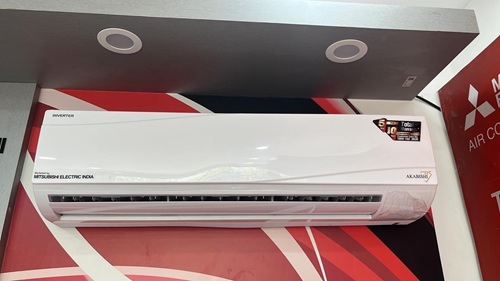In India, summers can be unbearable, and air conditioners (ACs) have become a necessity in most homes and offices. However, when buying or using an AC, one common confusion people face is: “How do I know the tonnage of my AC?”
The tonnage of an AC refers to its cooling capacity. In simple terms, it indicates how quickly and efficiently the AC can cool a room. For example, a 1-ton AC is suitable for a small room, while a 2-ton AC is better for larger spaces like halls. Identifying the tonnage is important not just for purchase decisions but also for maintenance, electricity usage, and room compatibility.
Let’s understand how you can identify the tonnage of your AC easily.

Check the AC Nameplate or Label
Most air conditioners come with a nameplate or sticker on the side or back panel of the indoor unit or outdoor compressor.
- This label usually displays the model number, power input, energy rating, and tonnage.
- Look for terms like “Capacity,” “Cooling Capacity,” or “BTU”.
- If tonnage is not mentioned directly, you may find the cooling capacity in BTUs (British Thermal Units), which can be converted into tons.
👉 Formula:
1 Ton = 12,000 BTU per hour
So, if your AC label shows 18,000 BTU, it means the AC is 1.5 tons.
Decode the Model Number
Almost every AC manufacturer (like LG, Voltas, Daikin, Blue Star, Samsung, Hitachi) embeds the tonnage in the model number.
- For example, in LG Split AC Model: LS-Q18HNZA → the number “18” represents 18,000 BTU, which equals 1.5 ton.
- Similarly, if you see 12, it usually indicates 1 ton, and 24 represents 2 tons.
Checking the model number is one of the fastest ways to find AC tonnage.
Measure the Size of the Room
If you don’t have model details or the label is missing, you can estimate tonnage based on the room size where the AC is installed:
- Up to 120 sq. ft. → 1 ton
- 120–180 sq. ft. → 1.5 ton
- 180–250 sq. ft. → 2 ton
Of course, factors like ceiling height, sunlight exposure, number of people, and insulation also affect cooling requirements.
Check the Remote or User Manual
Sometimes the AC remote or user manual clearly specifies the capacity. Look for terms like “Cooling Capacity” or “Tonnage.” If you have misplaced the manual, you can also search the model number online on the company’s official website.
Online Search
If you only know the brand and model number, a quick Google search with “Model Number + Specifications” can give you the exact tonnage. Most manufacturers list specifications on their official websites or on popular e-commerce portals.
Consult an AC Technician
If you still cannot determine the tonnage, an AC technician can help. Professionals can inspect the compressor, cooling coil, and motor power to identify the capacity accurately.
Why Knowing AC Tonnage is Important
- Right Cooling for Room Size – If the AC ton is too low for a large room, it will consume more energy and fail to cool effectively. If it’s too high for a small room, it may cool too quickly but won’t remove humidity properly.
- Electricity Bill Control – Higher tonnage means more power consumption. Matching the right AC capacity with room size saves electricity.
- Maintenance & Spare Parts – Service centers and technicians often ask for tonnage before repairs.
- Resale Value – Buyers of used ACs prefer to know the exact tonnage before purchasing.
Conclusion
Identifying the tonnage of your AC is not as complicated as it seems. By checking the nameplate label, decoding the model number, referring to the manual, or using simple BTU conversion, you can easily figure out whether your AC is 1 ton, 1.5 ton, or 2 tons. Since tonnage directly affects cooling efficiency, electricity bills, and overall comfort, it is essential for every buyer and user to be aware of their AC’s capacity.
With this knowledge, you can make smarter buying decisions and ensure that your AC performs efficiently in the long run.